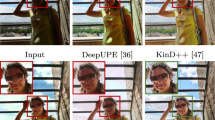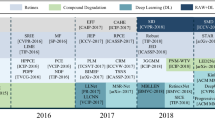Abstract
The color images produced by digital cameras are usually not in conformity with their intrinsic colors. This will seriously affect computer-aided medical facial image analysis because it is on the basis of accurate rendering of color information. To solve that, we propose an optimized color correction scheme for medical facial images based on a comprehensive study in various aspects: color spaces, color patches and color correction algorithms. Firstly, we utilize undistorted facial images to demarcate complexion gamut. Secondly, we choose the whole color patches located inside the range of complexion gamut as our validation samples and select the most crucial color patches from the gamut as our optimized training samples, followed by the optimization criteria. Thirdly, we select an adaptive target device-independent color space for medical facial images color correction task. Finally, we evaluate the performance of three most popular color correction algorithms, and select the most suitable one to build our final regression model. Qualitative and quantitative experimental results show that the proposed scheme is superior to that based on the ColorChecker 24 and performs very closely to the benchmark training error results while only 24 colors are involved. More importantly, the acquisition environment is well-designed with the system color chromatic aberration of 5.3369, which is quite small and hard to improve, but the color difference still can be perceived by human vision. Through our optimized color correction scheme, we succeed in reducing the color chromatic aberration to 1.5898. Furthermore, the corrected facial images are more consistent with the observed colors by human beings. Compared with the previous works, our color correction scheme is characterized by mission dependence and statistical reliability. Besides, the optimized color correction model has low complexity and high accuracy. All of these features make this scheme distinctive from previous color correction methods and effective for medical facial images color correction task.















Similar content being viewed by others
References
Chang CC, Lin CJ (2011) Libsvm: a library for support vector machines. ACM Trans Intell Syst Technol (TIST) 2(3):27
Cheung V, Westland S, Connah D, Ripamonti C (2004) A comparative study of the characterisation of colour cameras by means of neural networks and polynomial transforms. Color Technol 120(1):19–25
Connolly C, Fleiss T (1997) A study of efficiency and accuracy in the transformation from rgb to cielab color space. Image Process IEEE Trans 6(7):1046–1048
Fasel I, Fortenberry B, Movellan J (2005) A generative framework for real time object detection and classification. Comput Vis Image Underst 98(1):182–210
Fink B, Bunse L, Matts P, D’Emiliano D (2012) Visible skin colouration predicts perception of male facial age, health and attractiveness. Int J Cosmet Sci 34(4):307–310
Fink B, Grammer K, Matts PJ (2006) Visible skin color distribution plays a role in the perception of age, attractiveness, and health in female faces. Evol Hum Behav 27(6):433–442
Gijsenij A, Gevers T, Van De Weijer J (2011) Computational color constancy: survey and experiments. Image Process IEEE Trans 20(9):2475–2489
Hong G, Luo MR, Rhodes PA (2015) A study of digital camera colorimetric characterisation based on polynomial modelling. Color Res Appl 26(1):76–84
Li F, Zhao C, **a Z, Wang Y, Zhou X, Li GZ (2012) Computer-assisted lip diagnosis on traditional chinese medicine using multi-class support vector machines. BMC Complement Altern Med 12(1):127
Li X, Li F, Wang Y, Qian P, Zheng X (2009) Computer-aided disease diagnosis system in tcm based on facial image analysis. Int J Funct Inf Personal Med 2(3):303–314
Liu Y, Yu H, Shi J (2008) Camera characterization using back-propagation artificial neutral network based on munsell system. In: International Symposium on Photoelectronic Detection and Imaging: Technology and Applications 2007, pp 66,210A–66,210A. International Society for Optics and Photonics
Lo LC, Cheng TL, Chen YJ, Natsagdorj S, Chiang JY (2014) Traditional chinese medicine tongue diagnosis index of early-stage breast cancer. In: Medical Biometrics (ICMB), 2014 International Conference on, pp 7–14. IEEE
Matts PJ, Fink B, Grammer K, Burquest M (2007) Color homogeneity and visual perception of age, health, and attractiveness of female facial skin. J Am Acad Dermatol 57(6):977–984
Ohta N, Robertson A (2005) Colorimetry: fundamentals and applications. Wiley, Chichester. https://doi.org/10.1002/0470094745
Penczek J, Boynton PA, Splett JD (2014) Color error in the digital camera image capture process. J Digit Imaging 27(2):182–191
Smola AJ, Schölkopf B (2004) A tutorial on support vector regression. Stat Comput 14(3):199–222
Specht DF (1991) A general regression neural network. Neural Netw IEEE Trans 2(6):568–576
Stephen ID, Coetzee V, Perrett DI (2011) Carotenoid and melanin pigment coloration affect perceived human health. Evol Hum Behav 32(3):216–227
Stephen ID, Oldham FH, Perrett DI, Barton RA (2012) Redness enhances perceived aggression, dominance and attractiveness in men’s faces. Evol Psychol 10(3):562–572
Stephen ID, Smith MJL, Stirrat MR, Perrett DI (2009) Facial skin coloration affects perceived health of human faces. Int J Primatol 30(6):845–857
Tan WR, Chan CS, Yogarajah P, Condell J (2012) A fusion approach for efficient human skin detection. Ind Inf IEEE Trans 8(1):138–147
Tkalcic M, Tasic JF et al (2003) Colour spaces: perceptual, historical and applicational background. In: Eurocon, pp 304–308
Wang X, Zhang B, Guo Z, Zhang D (2013) Facial image medical analysis system using quantitative chromatic feature. Expert Syst Appl 40(9):3738–3746
Wang X, Zhang D (2010) A comparative study of color correction algorithms for tongue image inspection. In: Medical Biometrics, pp 392–402. Springer
Wang X, Zhang D (2010) An optimized tongue image color correction scheme. Inf Technol Biomed IEEE Trans 14(6):1355–1364
Wang X, Zhang D (2013) A high quality color imaging system for computerized tongue image analysis. Expert Syst Appl 40(15):5854–5866
Zhang HZ, Wang KQ, ** XS, Zhang D (2005) Svr based color calibration for tongue image. In: Machine Learning and Cybernetics, 2005. Proceedings of 2005 International Conference on, vol 8, pp 5065–5070. IEEE
Acknowledgements
This research was supported by the Natural Science Foundation of China under Grant No. 61273305 and supported by the Fundamental Research Funds for the Central public welfare research institutes No. ZZ0908032.
Author information
Authors and Affiliations
Corresponding author
About this article
Cite this article
Niu, J., Zhao, C. & Li, GZ. A comprehensive study on color correction for medical facial images. Int. J. Mach. Learn. & Cyber. 10, 935–947 (2019). https://doi.org/10.1007/s13042-017-0773-6
Received:
Accepted:
Published:
Issue Date:
DOI: https://doi.org/10.1007/s13042-017-0773-6




